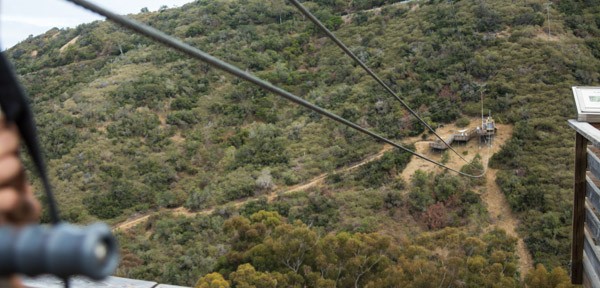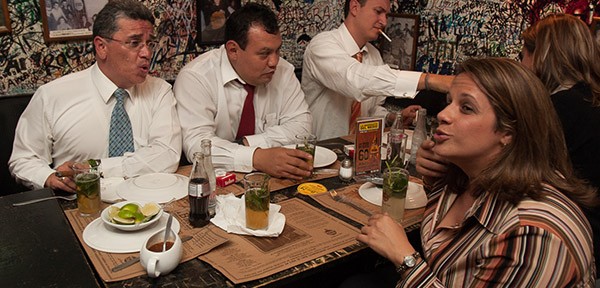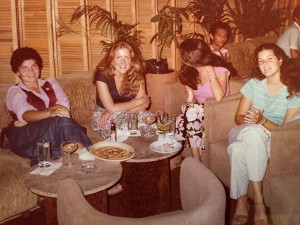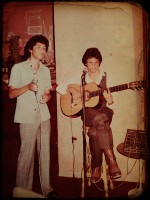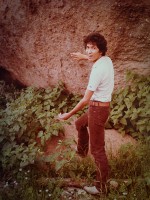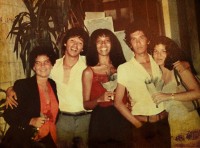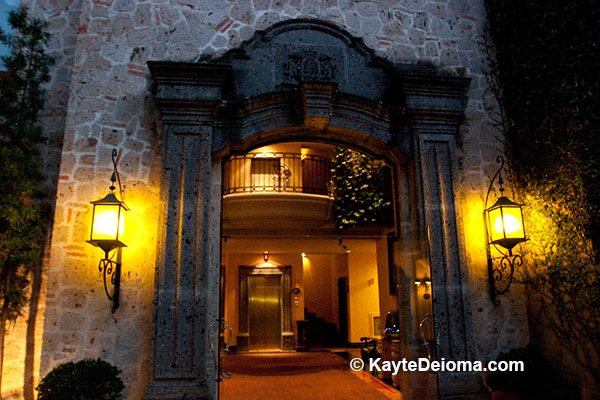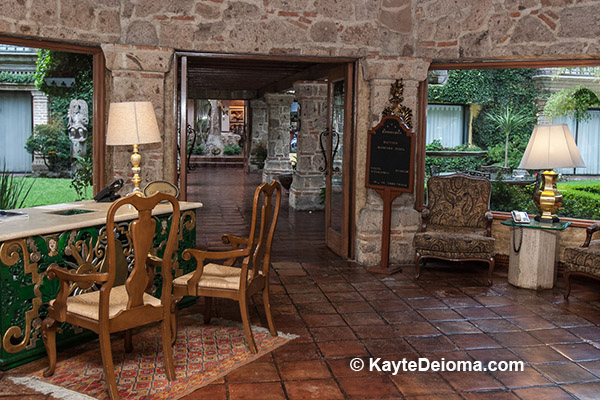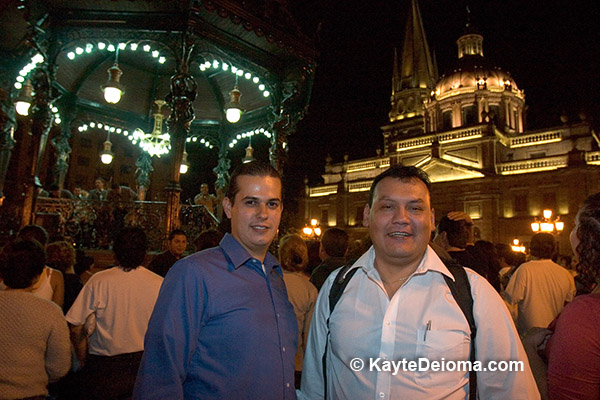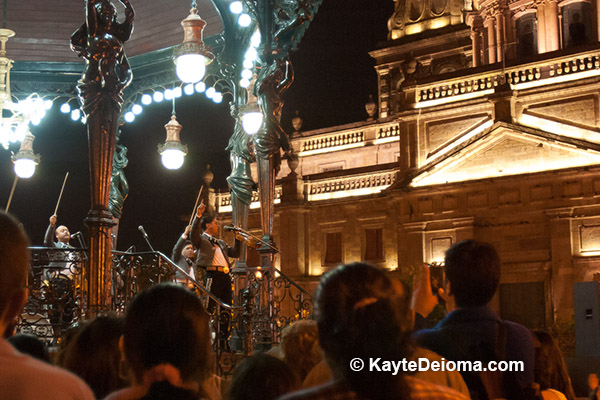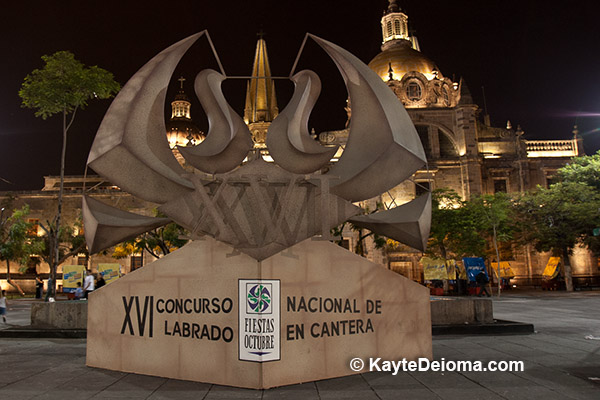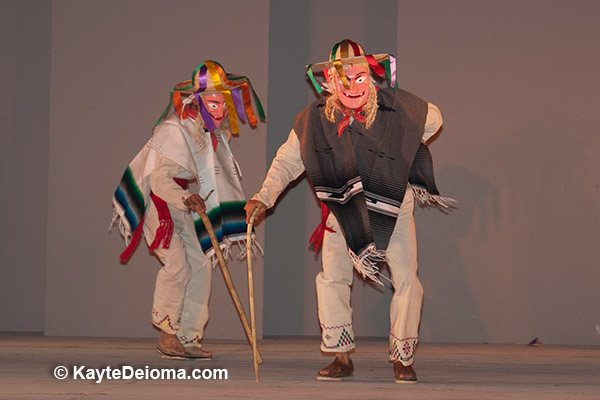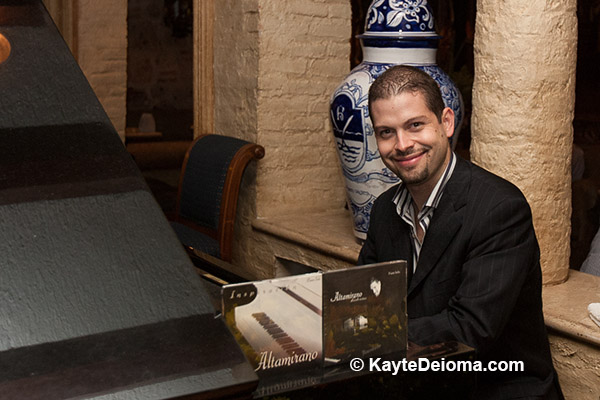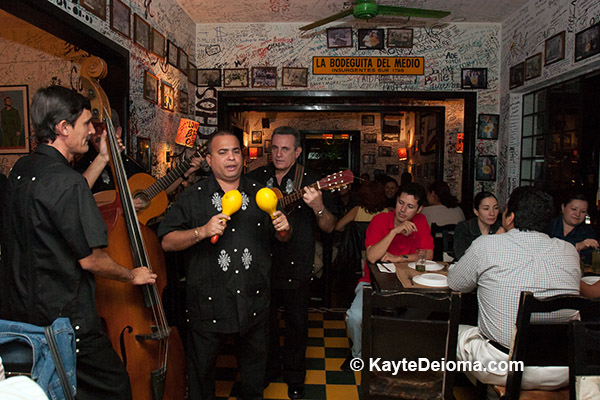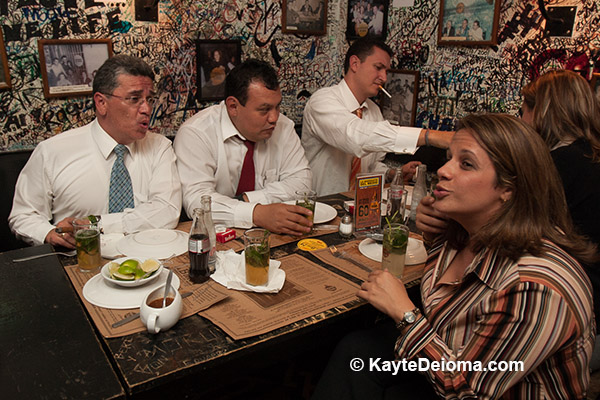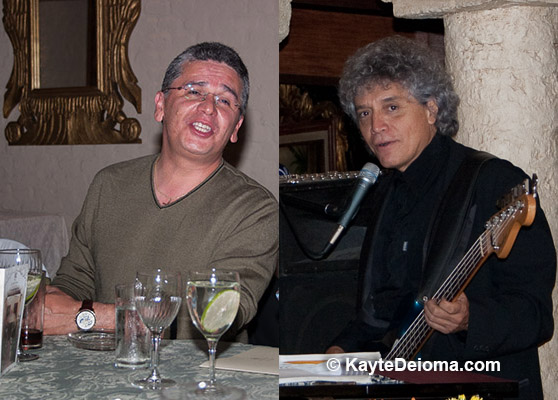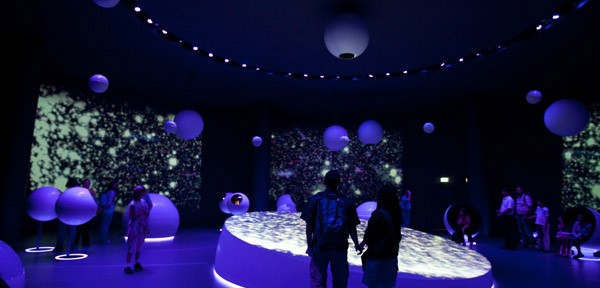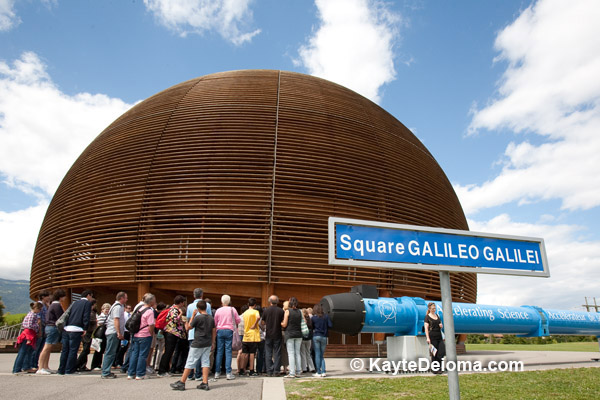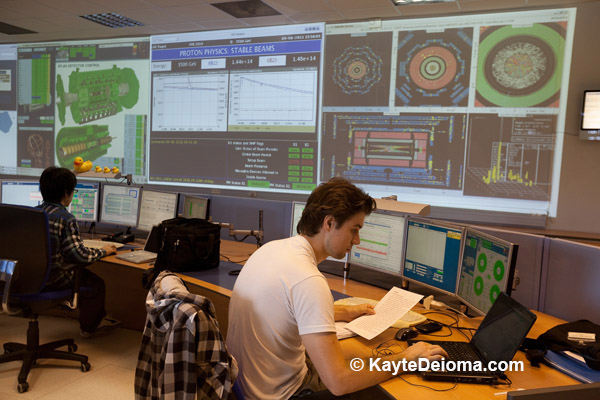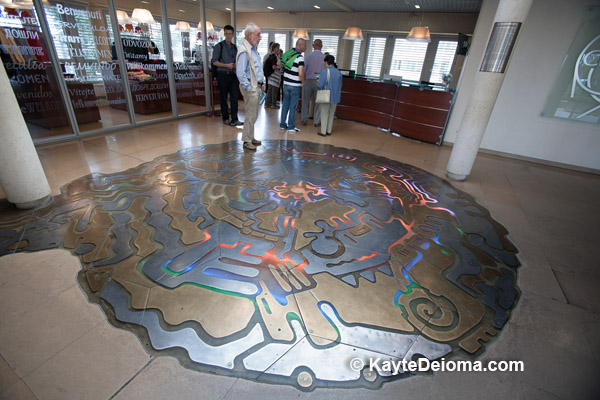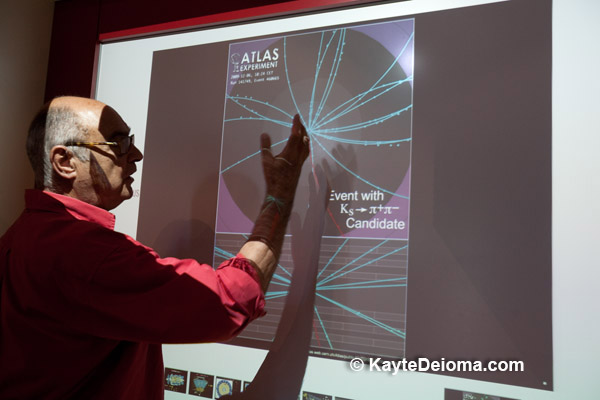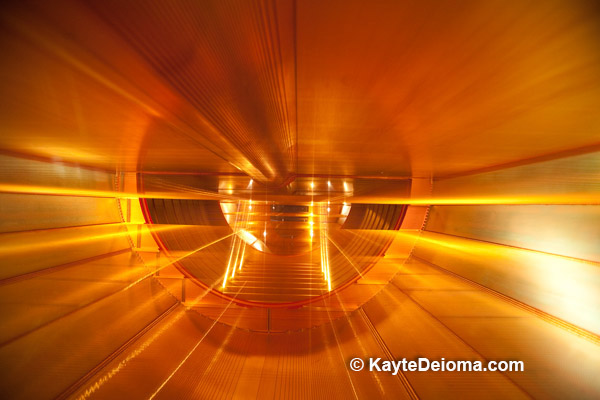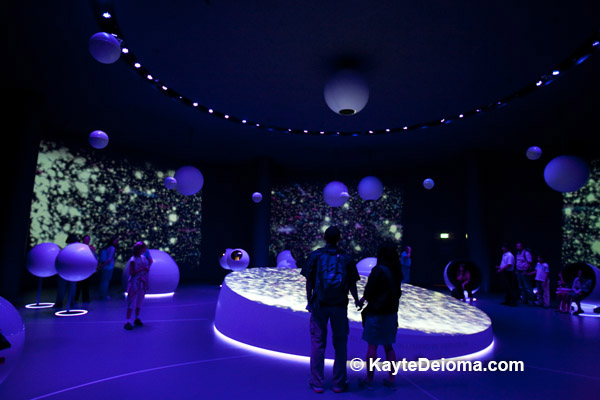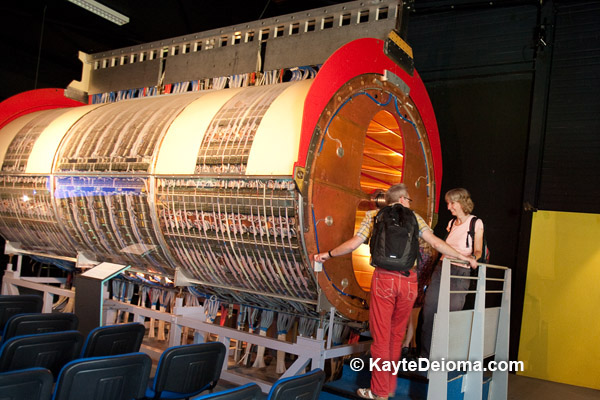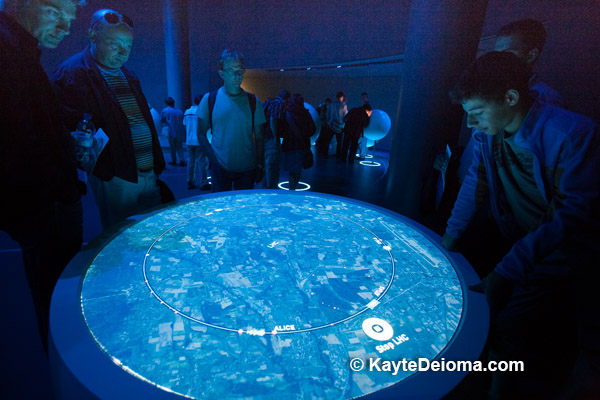It’s interesting how close you can come to complete trust in your connection to the universe and still hold back just that little bit. I don’t belong to any organized religion, but feel a deep connection to the divine energy that connects us all. I have had all kinds of evidence over the years that I can trust in the support and guidance of that divine energy, but I still often hesitate in fear. What if I leap after my dreams and the universe doesn’t support me? Ever had that feeling?
I ponder the thought from a wooden platform high in the hills of Catalina Island with a hint of a view of Avalon Harbor.
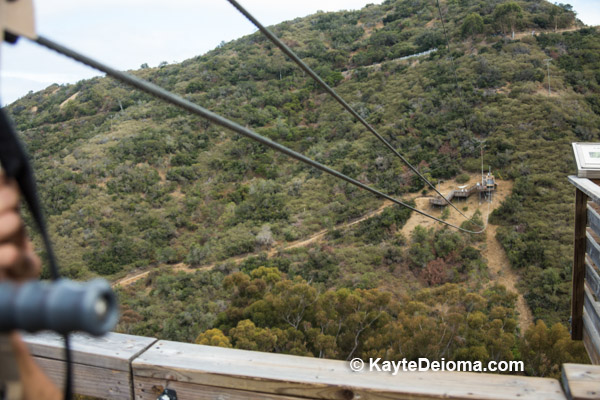
It was already on my mind when I was invited by the Catalina Island Company, which owns most of the private portion of Catalina Island that’s not part of the Catalina Conservancy, to join a few other writers for a night on Catalina sampling some of the island adventures. It sounded like it could be fun, but wouldn’t really move me toward my goals as the newly minted children’s singer/songwriter, Auntie Kayte.
Rather than agonize over the decision, I checked in with the universe and asked if I should go.
It said yes. Go for it.
I was surprised. I expected a quick no, and I’d move on with more music-related activities.
I asked again and still got yes.
That made me kind of curious, and I really do trust my connection to the universe, so I accepted the invitation. Maybe I would meet someone I needed to know on the trip. Maybe I just needed a break.
I wasn’t really expecting to end up here on this platform.
The invitation offered a choice of activities like a Hummer tour, helicopter tour, zip lining, Dolphin Quest, Undersea Adventure, kayaking, and more. I thought I’d have a chance to choose my specific adventures, but arriving on the island, I received my itinerary which included the Hummer tour and a helicopter tour for all of us and a separate more active itinerary for me and another Kate who also wanted to spend some more time outdoors. The bonus adventures they booked us were the Dolphin Quest at 11 am and a 2:30 pm Zip Line Eco Tour.
Uh huh. Even though I’m pretty adventurous – white water rafting is one of my favorite activities – in some cases I’m more adventurous in my fantasy than in my perceived reality.
I have no interest in bungee jumping or sky diving, but zip lining was a gray area. I like to think of me being that adventurous, but the idea of stepping off a platform and trusting a cable to carry me across a canyon is pretty intimidating. Yet here I am.
A couple years ago to test my mettle, I tried the zip line across the LA Convention Center at the annual LA Travel Show. I survived (the climb up was pretty scary), but it didn’t make me want to book a trip to Costa Rica to zip through the rain forest.
When looked at the itinerary with the Zip Line Eco Tour, my first thought was “……..zip lining….what have I gotten myself into?” followed more slowly by, “I did it in the convention hall. I can do this.”
When I checked into my room at the Pavilion Hotel, I quickly pulled out my laptop to look up the specific activities on my schedule. Dolphin Quest turned out to be a speed boat ride looking for dolphins wherever they’ve last been spotted in the bay. It’s “not recommended for people who get motion sickness.” Good thing I brought along some Bonine and my anti-motion sickness wrist bands.
My research continued to the Zip Line Eco Tour. Two hours zipping down 5 different lines from platform to platform from the summit down to the beach. Five lines. Not one. Five times stepping off a platform and trusting that I won’t fall to my death or make a crash landing at the next platform. Neither of those outcomes particularly concerned me. I was more afraid of that free-fall stomach drop you get in an amusement park drop ride. I avoid those rides.
Since it was scheduled toward the end of the 2nd day, I still had time to chicken out altogether.
The Hummer Eco Tour of the East End was great fun. Our driver, Bear, made a point of perching us precariously close to the edge of the dirt road with a shear drop into the canyons to take in each stunning view. I felt perfectly secure belted into the open Hummer inches from the precipice, but the passenger seated behind me was squealing in fear (although she wasn’t scared enough to move to an interior seat).
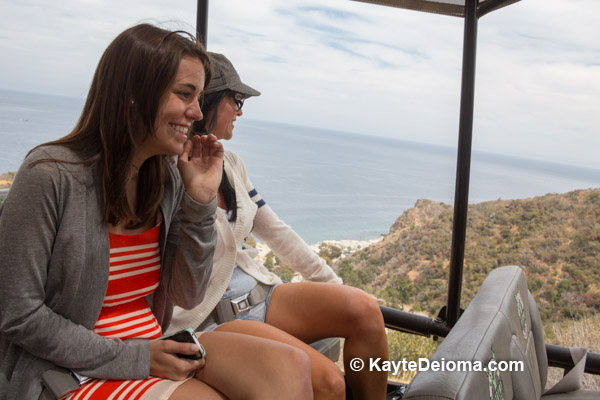
Bear gave us a detailed description of the island’s history and ecology as he drove, from the American Bison herd left behind after a 1920s movie shoot, to the reintroduction of the bald eagle after DDT destroyed the original population, to the 19 varieties of eucalyptus trees. Periodically he reached out the window and pointed out a bit of dessert paintbrush growing next to the dirt road or the abundant white sage used by the Native Americans for purification and spiritual cleansing, or as “cowboy cologne” to mask less pleasant odors.
We broke out of the overcast as we climbed to the summit. We could see the tiny town of Avalon far below to the east. Fingers of cloud rolled over the hills to the west, giving Bear a moment’s pause before deciding to continue in the direction we were heading – through the clouds and past the Zip Line Eco Tour entrance.
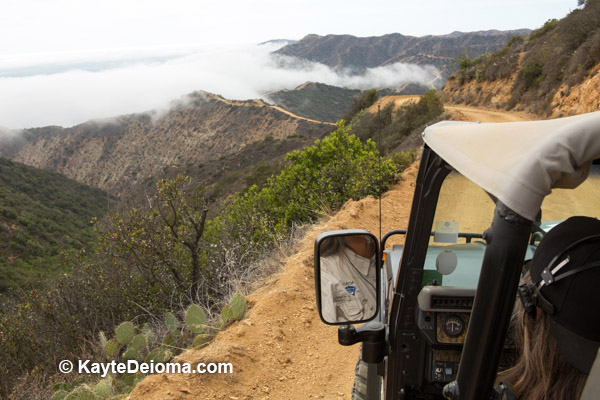
“What’s that trail next to the platform?” I asked. “That’s the bail out trail if someone chickens out and doesn’t want to jump,” said Bear. I found the idea reassuring.
We awoke the next morning to a fine drizzle (what do they expect when they invite Rainy Day Traveler?). With a helicopter tour, a bumpy boat ride and zip line tour ahead of me, I added a dose of Bonine to my coffee, fruit and croissant from the breakfast buffet.
Exclusively for guests of the Pavilion Hotel, the Catalina Island Company now offers Heli-Hiking and Biking options where a helicopter will fly you to a spot above Two Harbors at the other end of the island, and pick you up after you hike down to the town, or it will drop you at a location in town where you can ride a mountain bike into the hills and back. We got the 18 minute ride, without the hiking or biking, which was just as well, since it would have been wet and muddy in the mist.
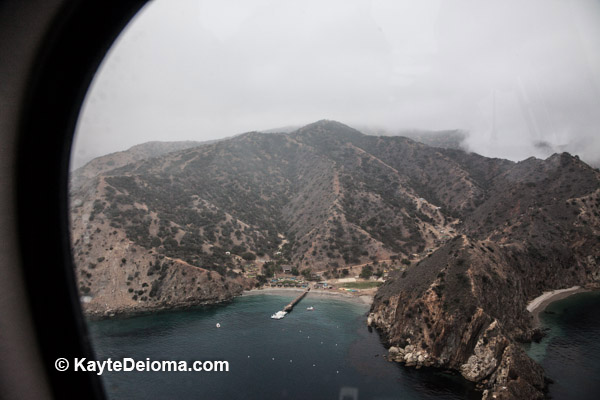
It wasn’t the best visibility for flying. In fact it was complete white-out conditions on the north side of the island, so we headed back the way we came. It was fun getting a bird’s eye view just the same, and the ride was smoother than I expected.
Dolphin Quest, on the other hand, was wildly bumpy. It’s so jarring that they seat you straddled, like on a horse, so you can stabilize yourself with your legs over the big waves and don’t go flying around the boat. Our quest took us south of Avalon and then north, with no dolphins to be found. We did get to see hundreds of sea lions on a beach near the quarry and on a large buoy in the bay. On the way back to the pier we ran into another posse of 20 or so sea lions out cavorting in the ocean.
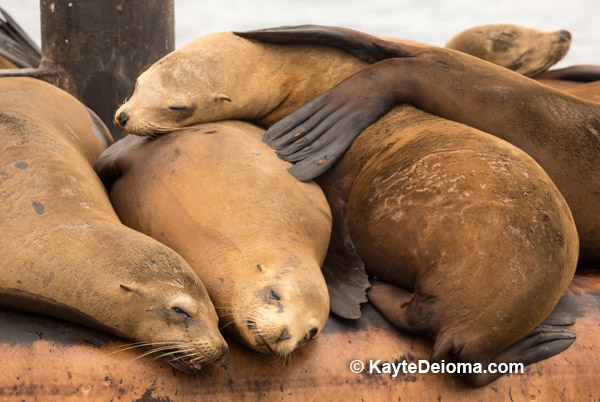
The bouncy race over the waves was exhilarating, like riding whitewater, but I could have used a winter parka rather than my little rain jacket given the wind chill factor. Kate was bundled in blankets against the cold. We were the only two passengers on a boat that holds six to 12 so there were no other bodies to help keep us warm.
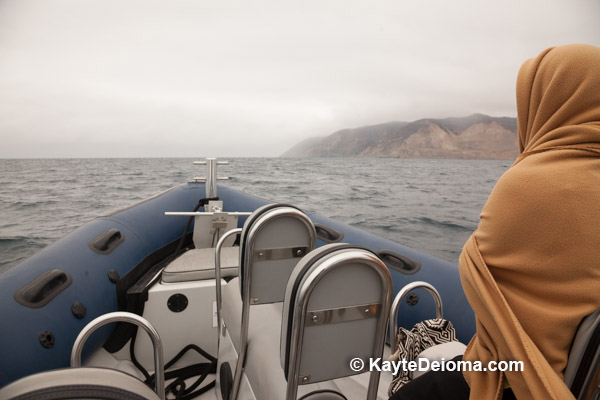
As much as we enjoyed the heli-tour and the Dolphin Quest, we both agreed they would make better afternoon activities after the sun has time to break through the marine layer.
After lunch it’s time to face my fears. Sarah joins Kate and I and 7 other adventurers as we receive our orientation from our dashing and entertaining young guides, Jake and Doug at Zip Line Eco Tours.
As we line up to get fitted in our harnesses, a young man turns to me, “You’re going too?” he asks surprised.
OK, so I guess at 5’5″ coming in just barely under the weight limit I don’t look the part of the great adventurer. As Jake is fitting my harness, I’m wondering if these straps are going to aggravate my bursitis, which I’ve finally gotten under some control. “You’ll be fine,” comes from my Trusted Source and the pain potential vanishes from my thoughts.
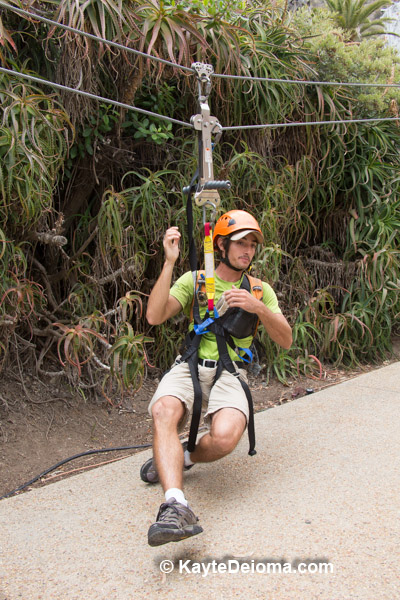
In addition to the heavy metal rig that attaches us to the wire that we each have to carry, I’ve got a 5 pound camera-lens setup with me as I join the others on the bus to the top of the course. I have no illusion that I’ll be able to shoot from the line, but I can at least get some action shots of my companions from the platforms.
So now here we are, geared up and ready to go, high up near the summit with the ocean barely peaking around all the hills below.
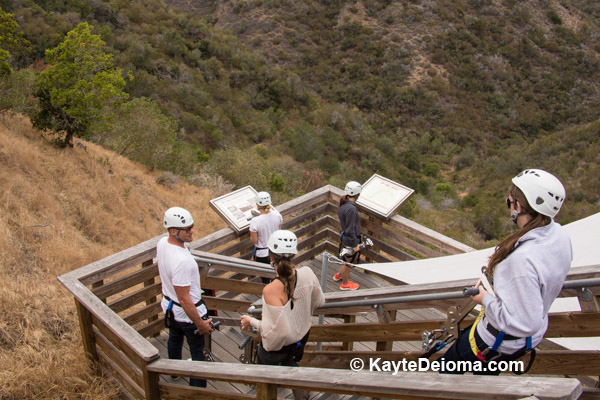
In addition to our trio, the group consists of a couple young guys from Malaysia, another Katie, in her 20s and her dad, a tall woman named Kat in high fashion boots and fishnet sweater who decided at the last minute this would be a great way to help her boyfriend get over his fear of heights, and Ethan, a 15-year-old with plenty of zip line experience whose T-shirt declares quite truthfully “I am awesome.”
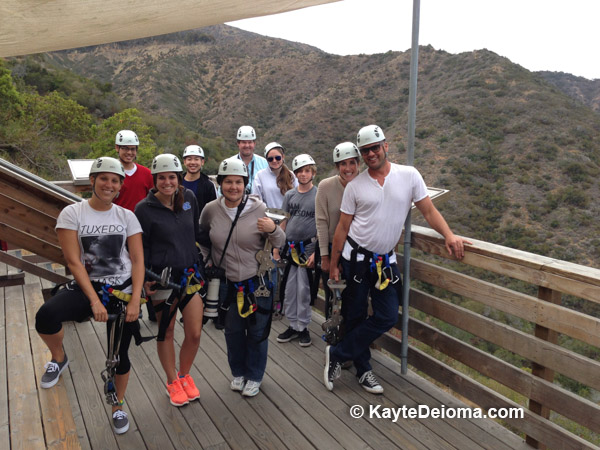
Doug zips down the line first to set up catch position at the next platform. Then Jake attaches young Ethan to the line to show us how it’s done. Jake explains that one hand should be kept on the handle to keep you from spinning and getting tangled, and that upside down probably isn’t a good idea. Other than that, we’re free to move around.
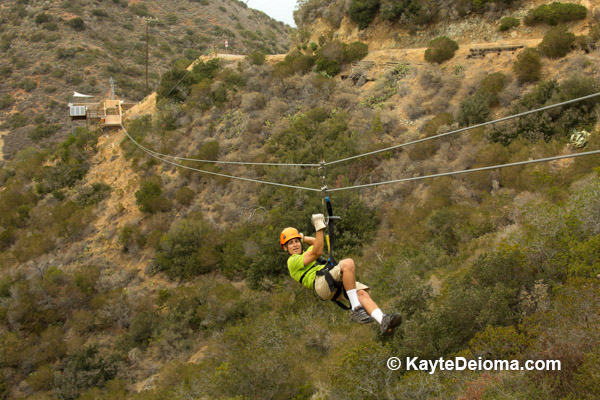
Ethan takes a running leap off the platform. He twists this way and that, waves for my camera, then strikes a superman pose for a second before turning back to landing position.
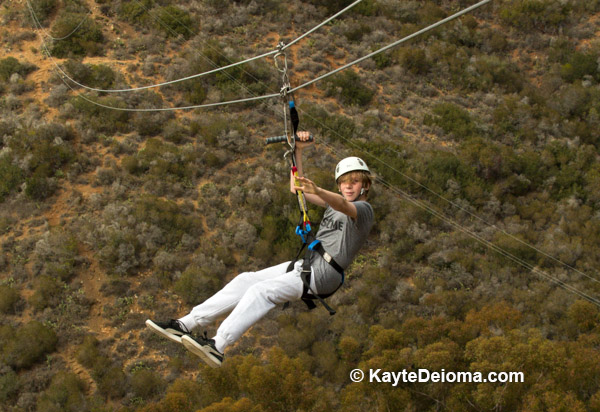
Yeah, sure.
Sarah and Kate have each zipped before. Kate steps up next. She steps off conservatively and gets her bearings before letting go with one hand and turning back to us with a smile and a big scissor kick. Sarah’s orange shoes stand out against the sage chaparral of the canyon as she zips down the line.
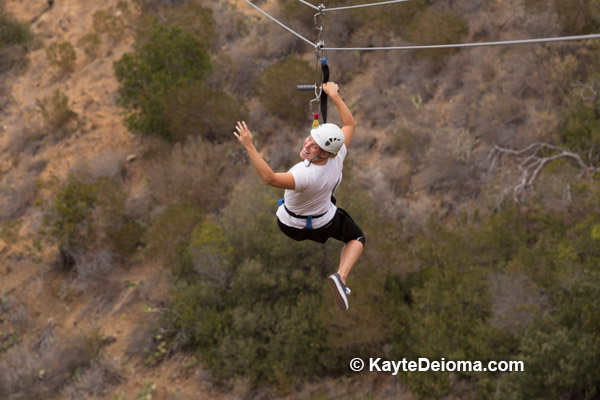
Now it’s my turn.
I step up onto the platform to be attached to the line, securing my camera. I have no intention of letting go of the two handles to take pictures. Jake fastens my rig to the line.
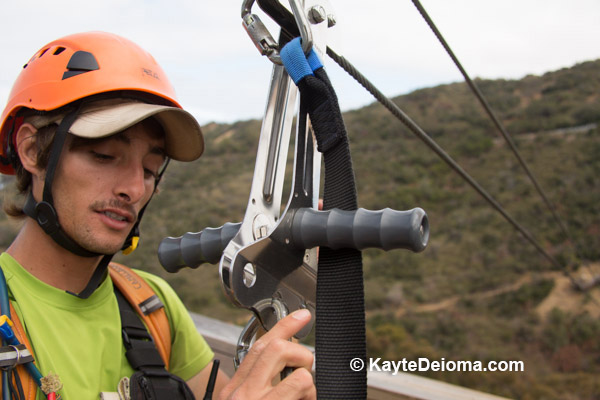
Some of the others stepped off the edge; some leapt. I can’t just step off the platform. I fear that stomach plunge. So I move carefully down the couple steps and sit down in the harness until I can feel its support. Once I can feel the line go tense, I lift my feet, Jake gives me a little push and I soar straight down the line. Hands gripping, legs straight out in landing position from the get go.
About half way down I let out a tiny “weeeee!” that carries across the canyon. But my eyes don’t stray from my goal. At full speed, it’s hard to imagine that the brake will be able to stop me, but it does, gently, and Doug reels me in and unhooks me.
I did it! One down. Four more to go.
At each platform there are interpretive panels about the flora and fauna of the area . Jake expounds mostly on the fauna, but only as long as we continue to express interest. He fills in more detail on some of the stories we heard the day before from Bear, like where the birth control came from that they’re now using on the bison to keep the herd size down. Doug doesn’t talk much other than a hearty “great job!” as you land.
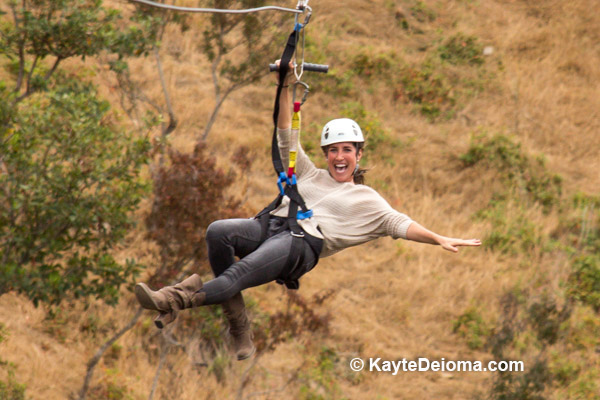
Time for the second run. I get a little braver and move a little closer to the edge before sitting into the harness, but I still need to feel that support before I take off. This time I experiment with the idea of taking one hand off the handle, but as the wind starts to spin me, I grasp for my strap to keep from completely spinning around and return both hands to the handles.
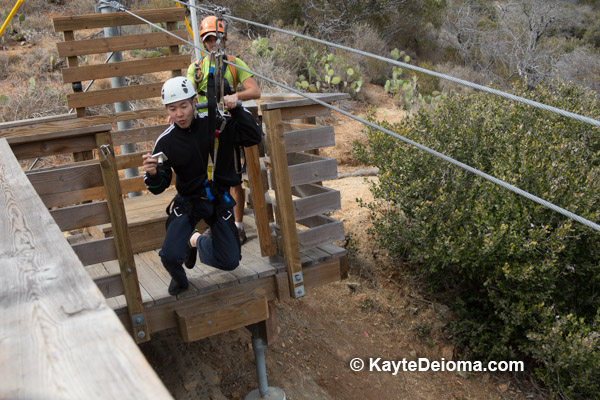
On the third run, the longest at 1100 feet, I think about trying to take a photo, but again the wind is too strong for me to keep from spinning, much less to aim 5 pounds of camera one-handed.
From the 4th platform, I snap a photo of a mule deer grazing below. One of the last few non-native species that they’re trying to figure out how to get off the island, according to Jake. The non-native American bison are staying.
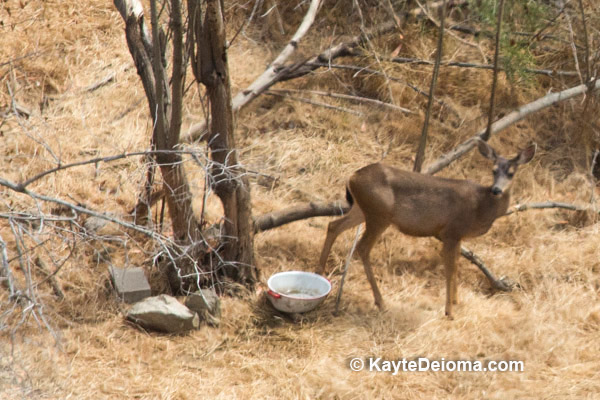
The line on run four is a little closer to the platform, so Jake encourages me to get all the way to the very edge, humoring me as I put my weight into the harness before taking off. I’m finally feeling comfortable enough to look around and enjoy the scenery and not just look at the next platform. From here, we’re starting to see the Avalon Casino peaking around the hill below.
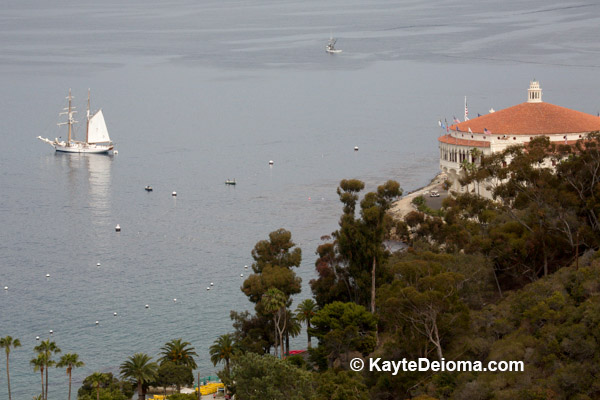
On the final line we get instructions on how to pose for the camera, which takes a photo almost at the bottom of the line. We see it flash as Doug goes down ahead to take up his catching position.
It’s the last run. I dig out my cell phone, set it on video and hand it to Kate to shoot me going down. Jake fastens my rig to the line. I walk forward to the edge of the platform. I finally trust my harness and don’t need to test it. I step right off, flying down the line. My triumphant “Woohoo!” echoes across the canyon as I let go my left hand and give a giant smile for the camera.
Safely back at sea level, I reflect that my zipping experience has been a metaphor for my connection to the divine energy of the universe that some people call God. Testing. Testing. Testing. Testing. And that the lesson I needed to learn was in that final fifth line. Letting go of doubt to take the leap, trusting that the support will be there.
Heading home on the Catalina Express at sunset, those streaks of sunshine sometimes called “God rays” reach down and spread out from a small gap between the island and the dark clouds just above it, reminding me of that moment of complete trust. I take a moment to look into the sunbeams and thank my divine guidance for sending me to Catalina.
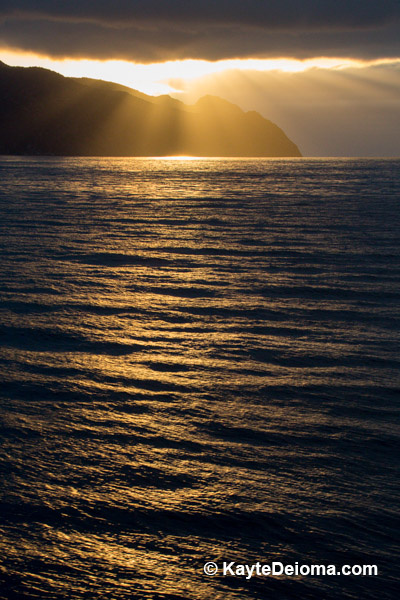
Read more about the Top Catalina Island Adventures on my LA Travel site on About.com.
****************************************
As is common in the travel industry, the writer was a guest of the Catalina Island Company and Catalina Express, who provided transportation, accommodations and activities. Divine inspiration provided by a Higher Source.

